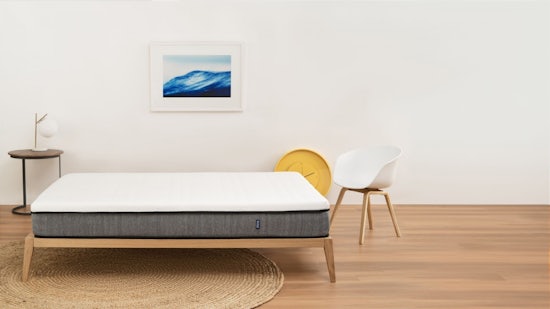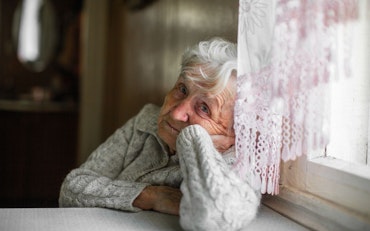Get a good night’s sleep with the right mattress
SPONSORED STORY – Did you know that 39 percent of seniors suffer from insomnia or symptoms of insomnia? Some think it’s normal to have your sleep quality decrease with age, however, your sleep needs do not change from your 20s into old age.

A good start to getting quality sleep is to look at your mattress (Source: Ecosa)
As we age, the human body starts to make less of the hormones or chemicals that help in sleeping, notably melatonin. This is often coupled with the natural susceptibility to joint wear-and-tear and other medical conditions. Pain from conditions such as arthritis, osteoarthritis, fibromyalgia, restless legs syndrome is often manifested in back, neck, hip, and shoulder pain.
A good start to getting quality sleep is to look at your mattress. Choosing a mattress can become daunting as you get older. Complications like back and joint pain can arise and your mattress needs should adapt.
Three things to look for in a mattress for seniors
1. Great support
Being more vulnerable to joint pain, seniors need a mattress that can equally distribute their weight. Mattress support relates to how a mattress can keep your spine aligned and your pressure points relieved.
2. Comfortable
Supporting your joints is one thing, but cradling them is another. A very firm mattress might be good for support, but the discomfort will keep you up all night. Your mattress should help your blood circulate normally for a more restful sleep.
3. Stays cool
Night sweats or hot flashes are quite common as we age. You should look for a cool mattress that won’t exacerbate any sweating to attain a restful sleep. There are many mattresses with cooling mechanisms and new technologies that have adapted to consumer needs
Mattress Type
The mattress type already gives you a general picture of how a mattress will treat your body. We’ll evaluate each mattress type against the three criteria for a good mattress: support, comfort, and coolness.
Memory Foam
Memory foam mattresses are known for even weight distribution and pressure point relief. It also moulds to your body shape, joints, and pressure points – ensuring that blood flows the way it should. Memory foam is also famous for its motion isolation.
Look out for terms such as gel memory foam, open-cell, and air ventilation systems. Off-gassing (the smell omitted from chemicals in non-organic mattresses, on the other hand, varies per mattress brand. It depends on what it’s made of and how it’s made, so be sure to research and read reviews on your memory foam mattress of choice.
Innerspring/Coil/Pillowtop
Innerspring mattresses are known for their bounciness and cool sleeping surface. It’s a traditional mattress type and still the most popular mattress type in Australia to date. It is, however, not the best option for seniors.
This mattress type is notorious for premature sagging, poor pressure relief, and motion isolation. An average innerspring mattress can lose a significant amount of support in its first year alone.
Latex
Latex mattresses are famous for their bounciness, cool surface, and pressure relief. They won’t contour to your body as much as memory foam does, but it still has the ability to gently cradle your pressure points. Latex is also resilient – having a more subtle bounce to it than an innerspring mattress.
Mattress Quality – Check the Warranty
One possible indicator of mattress quality is the warranty. While there is a strong correlation between mattress longevity and warranty, do check how much sagging the warranty will cover.
Weight and Firmness Level
Your body weight is usually a good indicator of how firm your mattress should be. It determines how deeply you will sink into the mattress. The more weight or pressure is exerted on the mattress, the greater the sinkage will be.
Sleeping Position and Firmness Level
Side sleepers normally prefer sleeping on soft to medium mattresses. However, elderly people are not advised to have a soft mattress as it would create problems getting up from bed. For this reason, elderly side sleepers should opt for medium to medium-firm mattresses.
Medium-firm mattresses are best for both stomach and back sleepers. These can provide the right balance of support and comfort, and contribute to healthy spinal alignment. However, sleeping on your stomach is best avoided as hyperextending the lumbar area can result in lower back pain.
Bed height
The Disability Rights Education and Defense Fund recommends that beds for seniors be 50-58 centimetres. So if your mattress measures up to 25 centimetres, you need a bed base around the same height. To find whether or not your bed height is right for you, sit on the edge of your mattress. If your knees are higher than your hips, it’s too low. If your knees are lower than your hips that you need to slide or jump down to get off the bed, then it’s too high. Find the level where your feet can touch the floor and your legs form almost a 90-degree angle.
Bottomline: Remember that the right mattress should help keep your health in check. Don’t just look at the mattress type, but also how the firmness or comfort level works with your body weight and sleeping position. The overall bed height also plays a huge role in taking care of your joints – making sure you don’t have a hard time getting on and off the bed.










